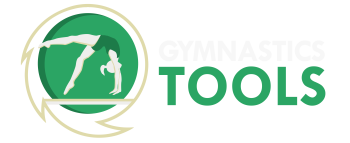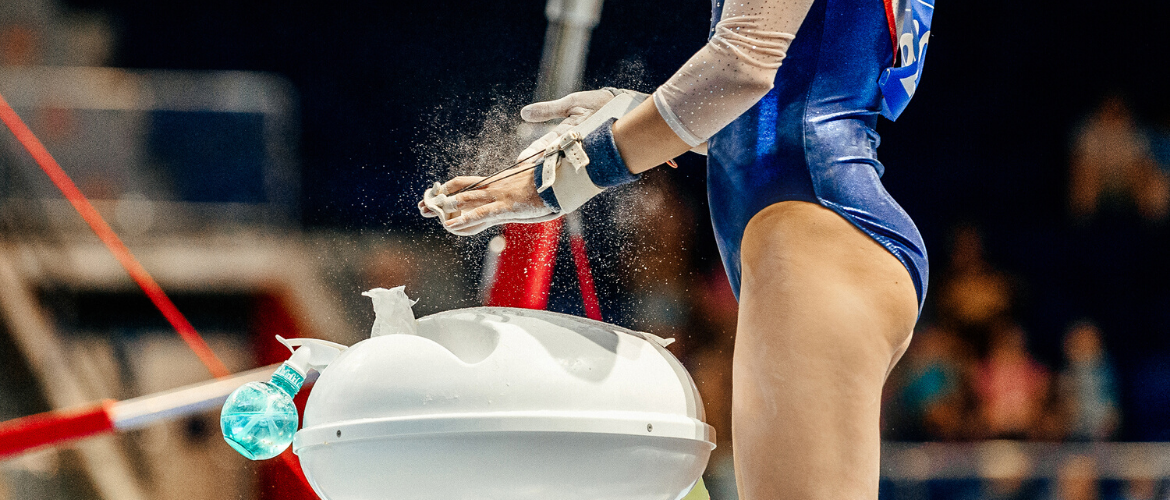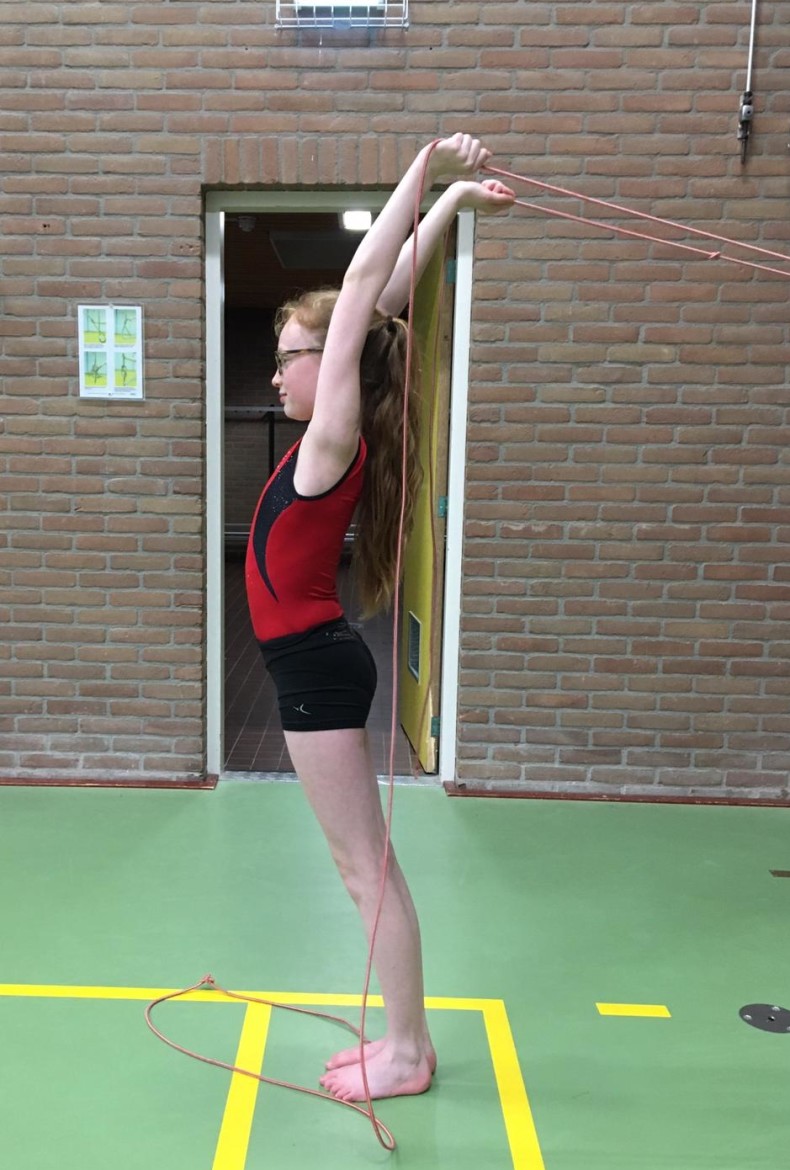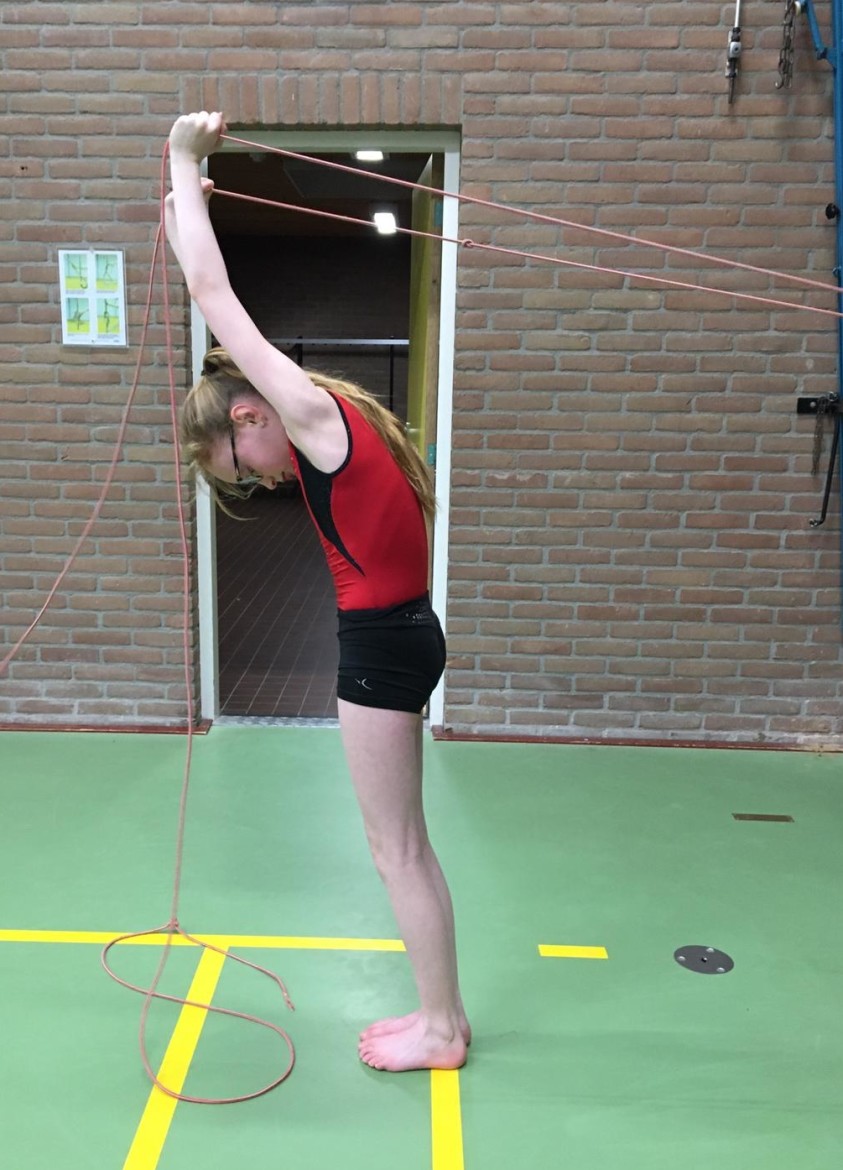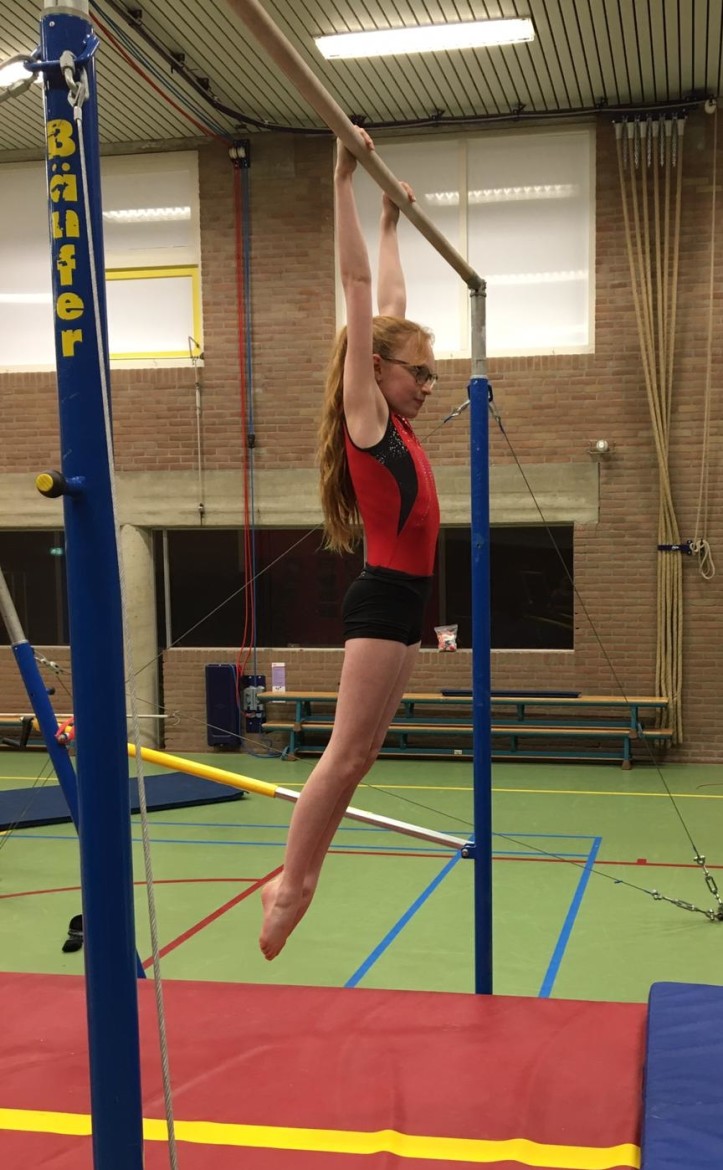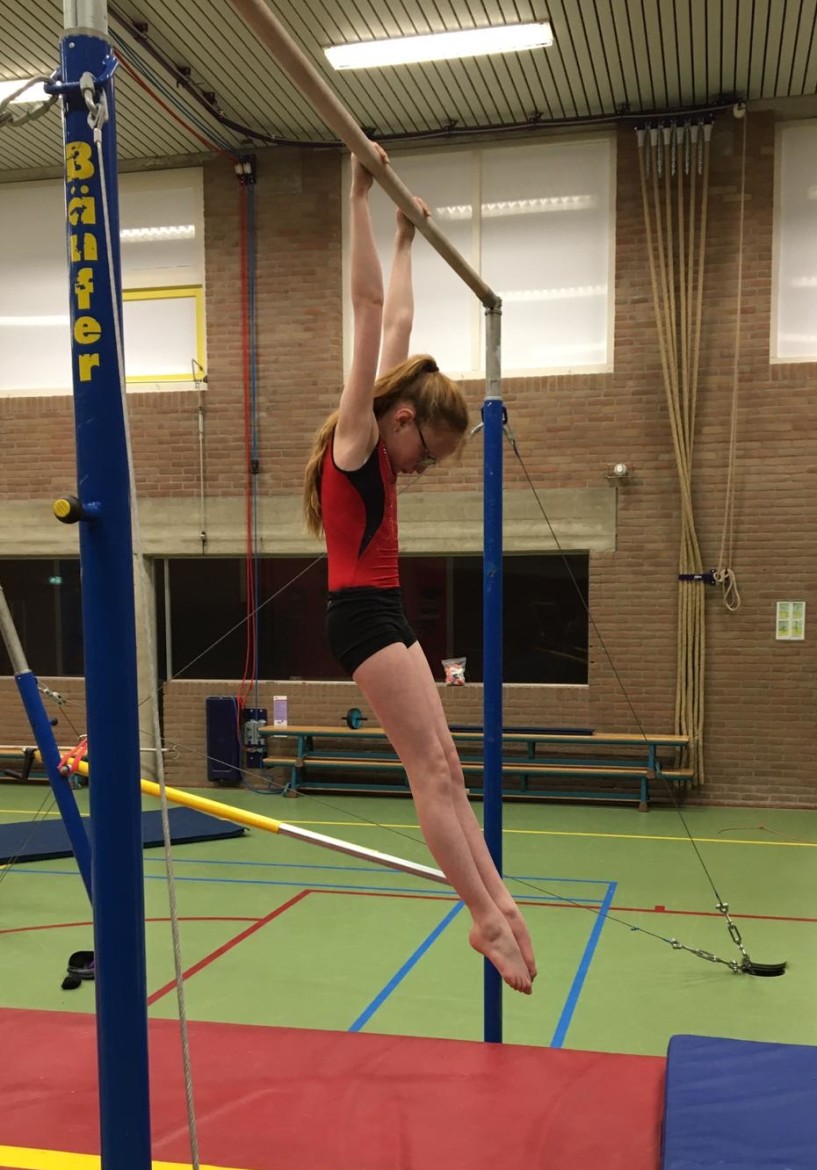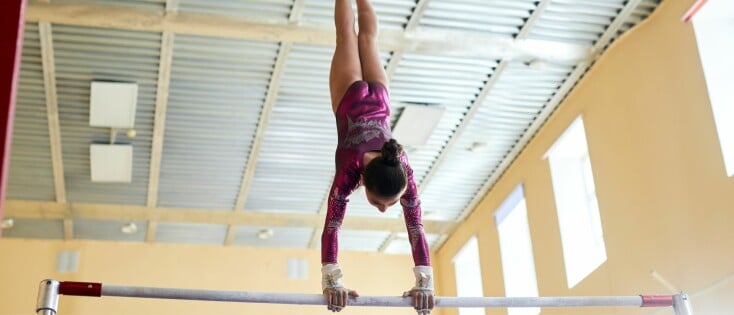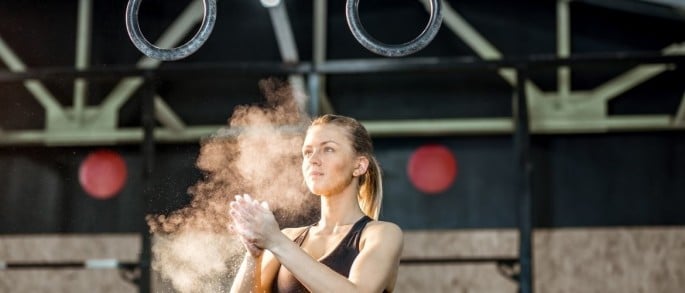The courbette / snap down is an arch-hollow action in which the body goes from a tensed hollow action to a tensed arch action or vice-versa. The courbette action can be found in different gymnastics skills like the round-off, back handspring, giants and flyspring.
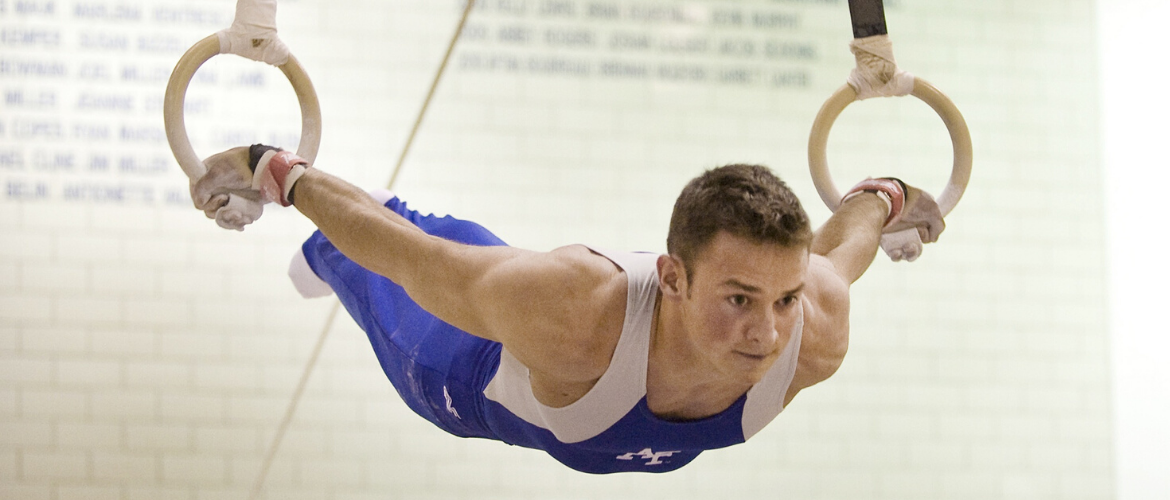
First, we will go through both positions.
The arched position consists of:
- stretched toes and tight legs
- open hips and slightly arched lower back
- open shoulders and chest
- arms by the ears
The hollow position consists of:
- stretched toes and tight legs
- square hips and lower back
- open shoulders and rounded inward chest
- arms by the ears
The differences in these positions can be found in the chest, lower back and hips. The shoulders remain open at all times. In the arch position, the chest is opened, the lower back slightly arched and the hips opened. In the hollow position, the chest is rounded inward and the hips are turned under. The hips are basically in a square position and the lower back is flattened.
Common mistakes are bending of the arms, closing of the shoulders and using the lower back and hips too much in the arch or hollow position. A few examples can be found below.
Example 1: arch
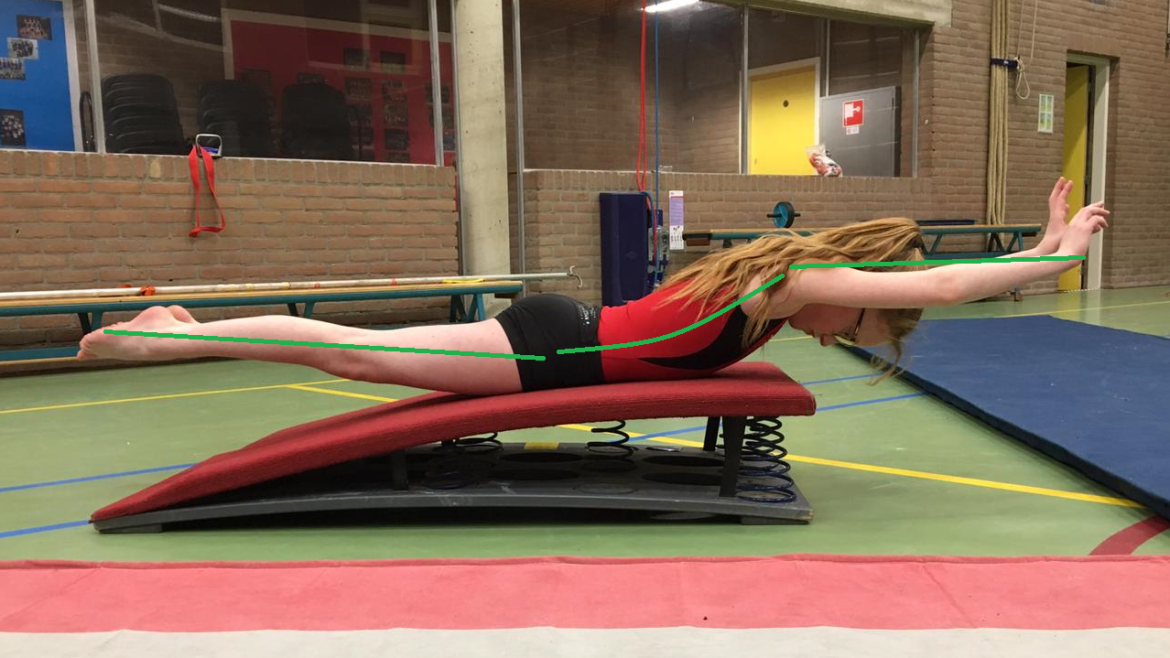
In this example, the gymnast opens her hips and arches her lower back nicely. The arms are by her ears and the chest is open. However, her shoulders are a bit closed and you want them open in the arch position. She could lift her arms a bit more.
Example 2: hollow
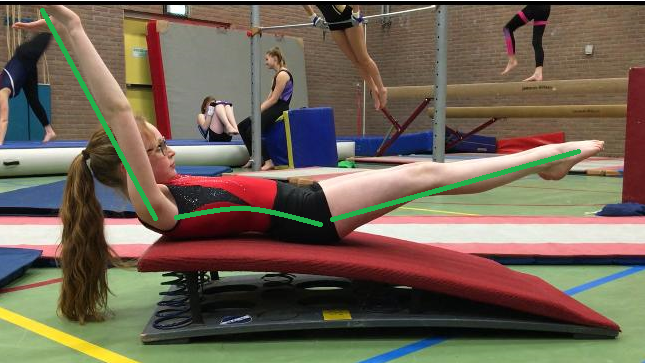
The gymnast stretches her arms and legs nicely and keeps her arms by her ears. However, the shoulders aren’t completely opened and her lower back is slightly arched. She should turn under her hips a bit more by pushing her lower back into the springboard. She may tighten her upper body a bit more by pushing her ribcage into the springboard as well.
Mistakes in the courbette action are often mistakes in tightness of the shoulder and hips (see article about body tightening). Experiencing being arch, hollow and straight in these joints is essential. Below, you will find some exercises that can help train the courbette action.
Preparation for the courbette
| Exercise | Explanation | Image |
| Tightening of the shoulders | Block the shoulder angle | 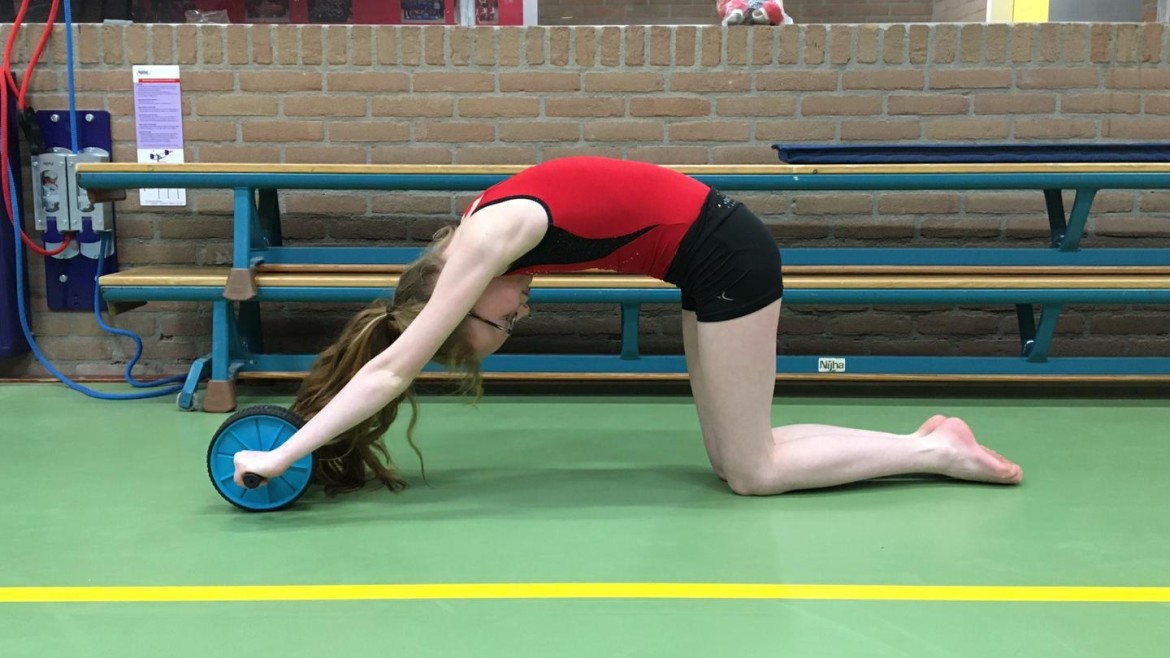 |
| Tightening of open hips | (banana) | 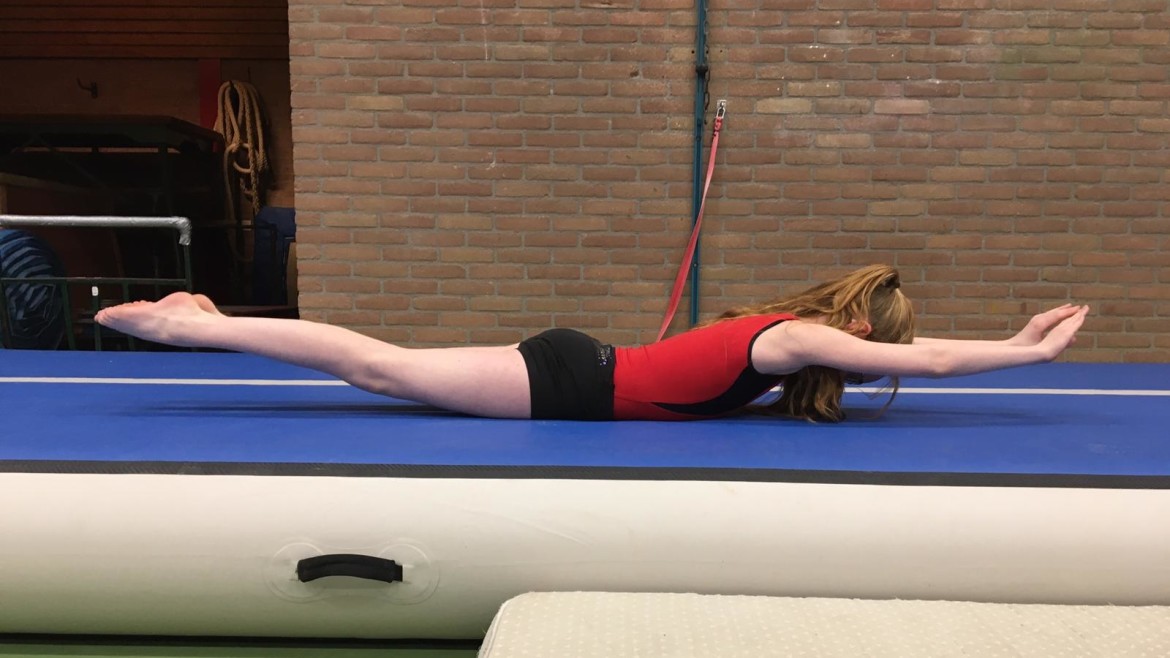 |
| Tightening square / slightly closed hips | (dish) | 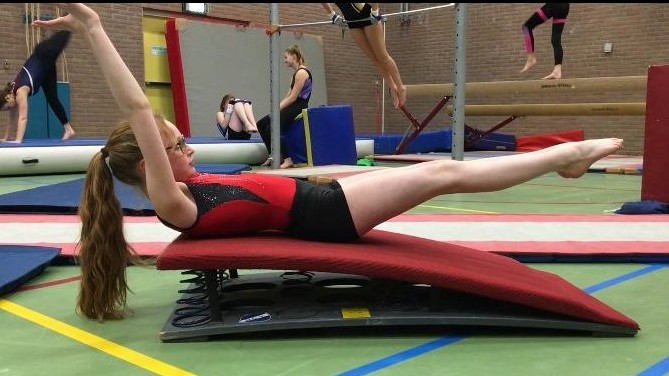 |
| From arch to hollow | Roll from banana to dish without touching the floor with your feet OR Go from arch to hollow while standing using an elastic band in the wall bar. Stand with your back to the wall bar and create tension to the elastic band while going to hollow position. | Start position:
End position:
NB Pay attention to the head position. Arms need to be by the ears, so that differs from the picture. |
Courbette action
| Exercise | Explanation | Image |
| On high bar | Move from arch to hollow while hanging on the high bar. Keep arms and legs in the same spot like an elastic band which is fixed on two sides. | Start position:
End position:
NB Pay attention to the head position. Arms need to be by the ears, so that differs from the picture. |
| Pushing off a springboard | Swing up to a handstand on a springboard. Create an arch position and snap-down to a hollow position in which you push yourself off the springboard through your shoulders. Your end position is standing in front of the springboard. | |
| From arch to hollow on a block or springboard | For the arch position, follow the shape of the springboard. Then move from arch to hollow position at once. Only your back should make contact with the springboard. | 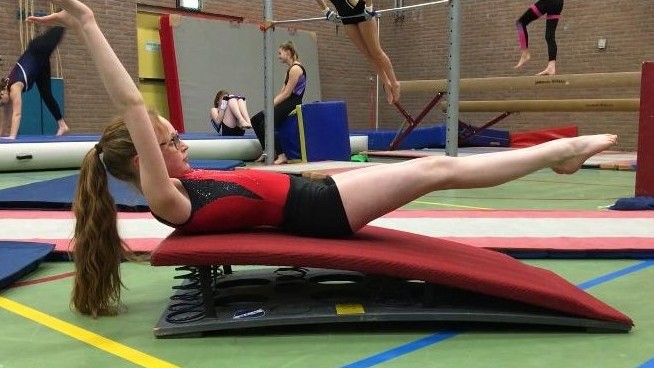 |
Since the courbette is an important element in the execution of skills like the round-off, back handspring, giants and flyspring, it’s necessary to learn it correctly. Use basic body tightening exercises and separate exercises to train the courbette action. This forms the basis of acrobatic lines in floor and bars routines. The information above can hopefully inspire you to apply this in your lessons.
